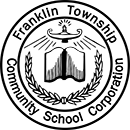Beginning with the 2019-2020 school year, Indiana’s public and charter schools must meet added requirements to identify, as early as possible, struggling readers who show risk factors for dyslexia. Schools must provide systematic, sequential, and multisensory instruction to meet these students’ needs. All students in grades kindergarten through second grade will undergo universal screeners to check their skills in six different areas. These areas are: phonological and phonemic awareness (ability to separate and change sounds in words), alphabet knowledge (name different letters), sound symbol relationship (phonics), decoding (reading), rapid naming (quickly name common objects), and encoding (spelling). FTCSC Schools utilized the Next Steps In Guided Reading Assessment (Phonological and Phonemic Awareness, Sound Knowledge, Grade level Reading Record, and Developmental Word Knowledge) and The Arkansas Rapid Automized Naming Screener (AR-RAN) to screen all students within those grade levels. Students who fall below a set score or benchmark on the universal screener will be considered by their school to be “at risk” or “at some risk” for the characteristics of dyslexia. Students who are considered “at risk” or “at some risk” will receive targeted, intensive instruction to grow their foundational literacy skills.
Dyslexia as defined by IC 20-18-2-3.5 is a specific learning disability that:
- is neurological in origin and characterized by:
- difficulties with accurate or fluent word recognition; and
- poor spelling and encoding abilities;
- typically results from a deficit in the phonological component of language that is often unexpected in relation to other cognitive abilities and the provision of effective classroom instruction;
- may include problems in reading comprehension and reduced reading experience that can impede the growth of vocabulary and background knowledge; and
- may require the provision of special education services after an eligibility determination is made in accordance with 511 IAC 7-40.
While the characteristics of Dyslexia screening may be a part of this assessment, it is important to understand that we do not diagnose Dyslexia. We conduct this screening to provide us with further information to guide our intervention on general reading instruction for students,
WHAT INTERVENTION PROGRAMS ARE USED TO ASSIST STUDENTS WHO SHOW RISK FACTORS FOR DYSLEXIA?
Students in FTCSC Schools who need intervention in foundational literacy skills receive targeted research based multi-sensory approaches to instruction through a research-based intervention that may include, but are not limited to Orton-Gillingham Approach and The RISE Framework.
HOW MANY STUDENTS WERE IDENTIFIED AS BEING “AT SOME RISK” OR “AT RISK” FOR DYSLEXIA DURING THE 2021-2022 SCHOOL YEAR?
All students in kindergarten, 1st, and 2nd grades were assessed using approved universal screeners. Of the 2209 students tested, 82 students were found to be “at some risk” or “at risk” for dyslexia.
HOW MANY STUDENTS RECEIVED DYSLEXIA INTERVENTIONS DURING THE 2021-2022 SCHOOL YEAR?
In the 2021-2022 school year, FTCSC Schools had 82 students in grades K-2 working with teachers to receive targeted and explicit direct instruction that is intensive and systematic.
Dyslexia Screening
In accordance with Indiana Code 20-35.5, Franklin Township Community Schools administers a comprehensive dyslexia screening to all students in grades K-2. The assessment tools we utilize include:
· NWEA, MAP Reading Fluency Dyslexia Screener
· And various elements of the MARF Phonics screeners
In 2021-2022 we identified 82 students as “At Risk or “At Some Risk”. All 82 received “interventions for learning characteristics related to dyslexia” as reported on the annual IDOE Elementary Reading plans. Building-based MTSS teams discussed all 82 and referrals were made for additional dyslexia screenings as warranted by those reviews.
In 2022-2023 we identified 426 students as “At Risk or “At Some Risk. Building-based MTSS teams discussed all 426 and referrals were made for additional dyslexia screenings as warranted by those reviews. Of those identified, they received “interventions for learning characteristics related to dyslexia” as reported on the annual IDOE Elementary Reading plans.

